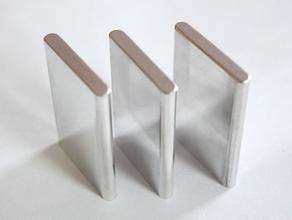LiPo Battery Problems - Storage, Charging, Revision
Oct 30, 2019 Pageview:1207
LiPo, short for Lithium Polymer batteries, is a type of lithium batteries currently utilized in a variety of consumer electronic gadgets such as drones and smartphones. These cells have attained popularity in the technological world for potent sources of power and especially in the radio control industry over the years. They are now one of the subtlest choices for any battery user searching for longer run times and sound power levels. To understand the real qualities of this unique battery type, one needs to identify themselves with the benefits that can be enjoyed as well as drawbacks.
LiPo batteries are deemed generally safer and greener than their predecessors. They contain unique qualities suitable for advanced applications such as in remote-controlled vehicles. As much as the safety of these batteries can be appraised, the owner must decide whether or not to follow the rules and treat the batteries with the respect they so deserve. If the cells happen to be stored, charged, discharged, maintained or handled inappropriately, they can become extremely dangerous.
This guide is intended to help you handle your LiPo batteries appropriately as well as to identify and find a solution for the various problems encountered by them.
Handling your LiPo batteries safely
LiPo batteries are an advanced version of its predecessors, offering much more resistance to deterioration, higher energy levels, and a long-lasting runtime as well as lifespan. However, as much as they prove to be tough, they are also very fragile inventions that need the following safety precautions to get the most out of them:
· Avoid leaving LiPo batteries in the sun for too long as the heat slowly degrades the cells
· Avoid inducing damage such as crushing/denting the batteries or even poking holes using sharp objects. These might cause short circuits and are the perfect recipes for fire-related incidents.
· Carefully pick up the LiPo batteries by the bodies and not the wires as this might break the solder joints and force further complications into the picture.?
Charging your LiPo batteries safely
There is a likely chance that apart from the manual damage that you could inflict on your battery, charging it can also raise an opportunity for various problems. As much as chargers in this era are technically designed to be safe, they aren’t perfect and thus can prove to be a medium of problems for your batteries.
The most suitable location for charging your LiPo batteries is away from any flammable material, and this provides you with many options at your disposal. This prevents the chances of fires and possible explosives because LiPo cells are manufactured using active chemicals.
?Probably looking for an item unto which you can place your battery inside while charging may be a good measure for being extra cautious. It can be as simple as a cash box or a customized toolbox or a commercial LiPo sack. It may not be a required solution for safety. Still, it is definitely a good idea in case your charging location is not perfect. One should also try as much as possible to be close to their charging LiPo batteries and avoid leaving them unattended, which could result in dire consequences in case something goes wrong.?
Storing your LiPo batteries appropriately
Storing of LiPo batteries has some of the most straight forward and clear rules that tend to apply to many other types of cells. Keeping them in a cool and dry safe place is one of the most fundamental rules given for all battery types available.
Storing the cells in a suitable or specially designed container serves as one of the basics of proper storage for LiPo batteries. Using suitable metal containers or original LiPo sacks protect the cells from harmful and adverse conditions, such as extreme temperatures, that can harm the battery while being stored.
One needs to find a proper location to store their LiPo batteries appropriately. As much as you may use a LiPo sack or metal container, storing them in a degrading place could ultimately lead to the cell’s decomposition as time goes by. A suitable location is one that is not affected by temperature fluctuations, for example, as the significant changes in the temperatures can possibly damage your cells. Refrigerating your batteries may seem like a good idea, but only if you had initially packed them in a container. Be sure to leave the batteries until they attain room temperature before your next use.
· You should also be aware of where and how long you intend to store your LiPo batteries. Note that even during storage, cells tend to deteriorate over time. This is especially when they are left unattended over more extended periods.
Restoring or recharging over-discharged LiPo batteries
Cautions
Before beginning any restoring or recharging processes, one needs to be aware of the extremely volatile nature that LiPo batteries have. Mishandled LiPo batteries are known to cause fire-related complications due to the very active materials present in their cells. The procedures should, therefore, be handled with extra caution for the safety of the user and battery as well.
How to restore or recharge over-discharged LiPo battery?
At some point in time, you might over-discharge your LiPo battery and find that it does not seem to pick up any charge. This can be a frustrating event if you lack the knowledge on how to restore or recharge such an over-discharged battery.
At times, over-discharged batteries may not be recognized by their respective LiPo chargers in case their cell voltages drop below 3V. Here is what you can do:
1.You will need to get a NiMH charger.
2.Connect the main plug of your battery to the charger and charge the LiPo battery using the lowest possible current.
3.It will take a few minutes to bring the voltage back to 3V, and that is the point you should stop charging it.
How to fix a LiPo battery with a cell error?
1.Change charger to the NiMH program.
2.Unplug the balance cord.
3.Enter a low A value, which is about half the battery capacity.
4.Charge for about a minute without letting it exceed maximum V.
5.Stop charging after 40 seconds.
6.Plug in the balance plug.
7.Change it to LiPo Balance Charging Program.
8.Change the necessary values back to normal.
9.Try to change naturally.
Final thoughts
LiPo batteries might get a bad reputation for its dangerous nature, but reality states that they are only as harmful as the user allows them to be. The problem lies with the user in most cases and not the LiPo batteries.
- Prev Article: Lithium-ion Battery Production Pollution
- Next Article: Lithium-ion Ferrous Phosphate Battery-Comparison, Cycling Life, Safety
Leave Message
Hottest Categories
-
Hottest Industry News
-
Latest Industry News











